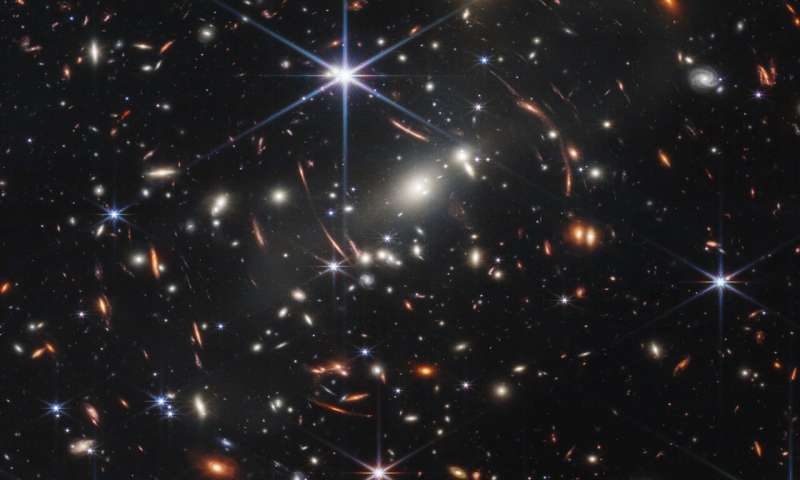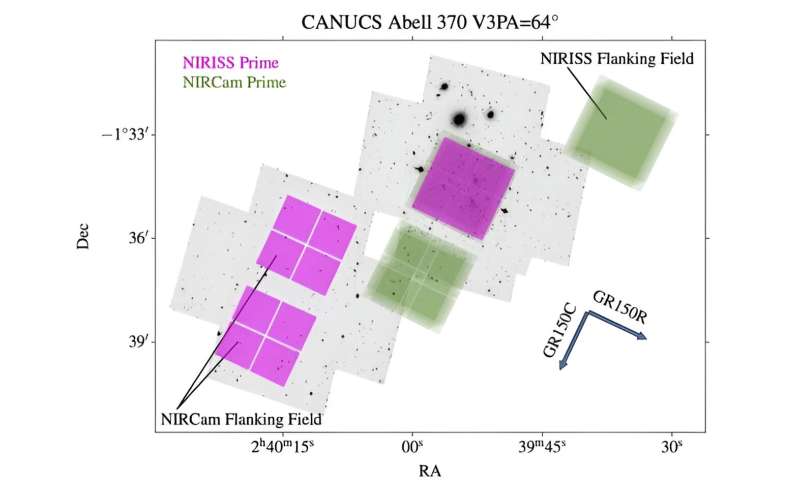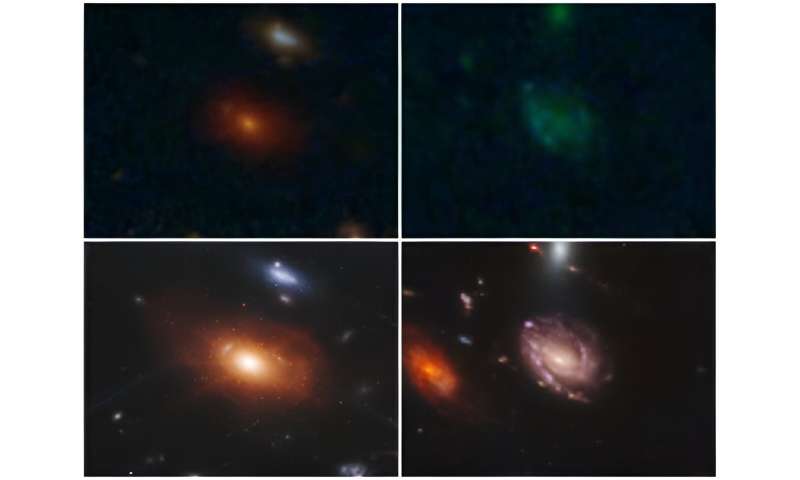More JWST observations are finding fewer early massive galaxies

There's a common pattern in science. We develop some new process or tool that allows us to gather all kinds of data we've never had before, the data threatens to overturn all we've assumed about some long-established theory, and then the dust settles. Unfortunately, the early stage of this process generates a lot of sensationalism in the press. Early results from the JWST are a good example of this.
The James Webb Space Telescope is the most powerful infrared telescope we've ever built. It is sensitive enough to capture detailed images of some of the earliest galaxies. Those that formed soon after the so-called dark ages of the early universe.
Before JWST we only had galactic observations from a slightly later period, when the galaxies were fully established. Based on those observations and our understanding of the Big Bang, we had a good idea of how quickly galaxies evolve. Or so we thought, because initial observations from JWST seemed to overturn that.
The galaxies JWST found were large, bright, and already had structure to them. So the headlines ranged from claims that the Big Bang and possibly even general relativity had been disproven. But now the dust is starting to settle, and it turns out those revolutionary results weren't quite as unusual as some implied, as a new study shows.
Identifying the most distant galaxies is a bit of a challenge, so there are a few tricks astronomers use to help them out. One of these is to use what is known as a break in a galactic spectrum. For neutral hydrogen, there is only so much energy it can absorb before it becomes ionized. This means that if photons from a galaxy are above this limit, they will ionize hydrogen in the interstellar medium and be scattered so much we don't see it. This is known as the Lyman break.
There's a similar break called the Balmer break. Galactic light that shows these breaks are called double-break galaxies. Since astronomers know the wavelengths of these breaks, they can specifically target galaxies at a certain distance by looking for breaks with the right redshift.


Thefirst JWST results looked for double-break galaxies at redshifts of about z=7, or when the universe was less than a billion years old. And they found all those galaxies that caused such a star. Too many, too bright, and too evolved.
But while the double-break method is great for finding galaxies, you can see where it could introduce a bit of bias into the data. The galaxies need to be bright enough and hot enough to ionize hydrogen, so smaller, dimmer, and cooler galaxies might be left out. This bias is well known, but this new study wanted to get a handle on how severe the bias might be.
The team used data from the CAnadian NIRISS Unbiased Cluster Survey (CANUCS), which uses JWST images of galaxy clusters looking for small distant galaxies that are gravitationally lensed to make them appear brighter. Their findings have been published on the pre-print server arXiv.
From this data, they identified 19 double-break galaxies. Since CANUCS galaxies contained more than double-break galaxies, the team could compare the distribution of double-break galaxies to a larger population.
What they found is that double-break selection methods can bias towards larger and brighter galaxies. Particularly in small samples such as theirs, even a single large outlier can give the impression that galaxies are larger and brighter than they statistically are. In other words, we shouldn't bet the farm on our initial results. As we gather more data and get detailed observations of more galaxies, the selective bias can wash out.
JWST observations may still force us to drastically revise our standard cosmological model in time, but this study shows we are still in the early stages. The standard model isn't out of the game yet, and it will take many more observations to see where the dust really settles.
More information: Guillaume Desprez et al, ΛCDM not dead yet: massive high-z Balmer break galaxies are less common than previously reported, arXiv (2023). DOI: 10.48550/arxiv.2310.03063
Journal information: arXiv
Provided by Universe Today Growth of 'baby galaxies' witnessed with James Webb Space Telescope
A new theory to explain Abell 3827's hazy and askew gravitationally lensed galaxies

A trio of astrophysicists, two from Carnegie Mellon University and the third from Bahamas Advanced Study Institute and Conferences, is proposing a new theory to explain the unique lensing seen with Abell 3827—a galaxy cluster approximately 1.3 billion light-years away. In their paper published in Monthly Notices of the Royal Astronomical Society, Joyce Lin, Richard Griffiths and Jenny Wagner, describe their new theory and explain how it might help better understand the nature of dark matter.
Abell 3827 is a designation for a cluster of hundreds of galaxies, as viewed from Earth—just four of the galaxies are clearly prominent. Situated approximately 1.3 billion light-years away, the cluster has represented an opportunity for astrophysicists to study dark matter due to its unique lensing properties.
Prior research has suggested that the visible part of the cluster makes up just 10% of its mass—the rest is believed to be dark matter. Prior research has also found that because of the nature and arrangement of the galaxies in the cluster, it serves as an unusually large gravitational lens. Such lensing has resulted in the formation of what looks like a glowing blue ring around the edges of the cluster.
Abell 3827 was discovered just two years ago by a team studying data from the Hubble Space Telescope. Since that time, astronomers have been debating the number of images that can be seen when looking at it—estimates range from four to eight. The difficulty in pinning down the exact number is due, it is believed, to gravitational distortion of the light emitted by the stars that make up the galaxies, by unseen dark matter.
It has also been noted that some of the distortion is likely related to rotation, which some have claimed is an example of self-interacting dark matter. In this new effort, the research trio is proposing that some of the characteristics of Abell 3827 are due to the morphology of the lensing.
They suggest that the lensing seen with the cluster is due to its three-dimensional characteristics—a major departure from prior theories which describe lensing as thin and flat. In their theory, Abell 3827's lensing is shaped more like a waffle, with different parts having different amounts of thickness—a characteristic that could explain why the cluster appears to look stretched more in some parts than others.
Notably, for their theory to hold water, the galaxies making up the cluster must not all be the same distance from Earth—the research team believes that three of the major four galaxies are all nearly the same distance while the fourth is perhaps tens of millions of light-years closer.
More information: Joyce Lin et al, Much ado about no offset—characterizing the anomalous multiple-image configuration and the model-driven displacement between light and mass in the multiplane strong lens Abell 3827, Monthly Notices of the Royal Astronomical Society (2023). DOI: 10.1093/mnras/stad2800 . On arXiv: doi.org/10.48550/arXiv.2306.11779
Journal information: arXiv
Notices of the Royal Astronomical Society
© 2023 Science X Network
No comments:
Post a Comment